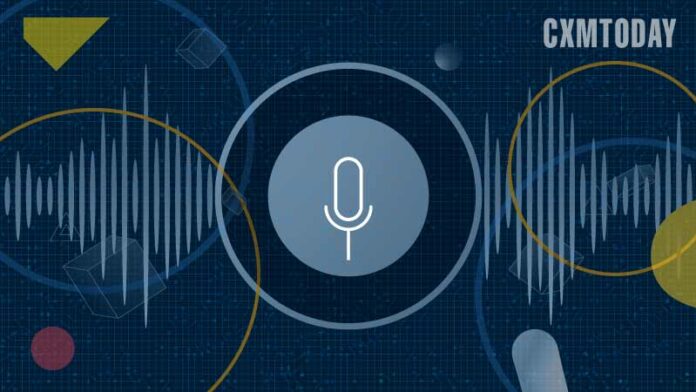It is cheaper, faster, and easy to use, and organizations can customize it and integrate it with existing software
Recently, Cook County in Illinois announced that they are upgrading tens of thousands of phone lines to a Voiceover Internet Protocol (VoIP) system. This $25 million project will cover over 20,000 phone lines across the county and surrounding Chicago. While VoIP has been around for a while, we dive into the technology, how it works, and who the key players are.
VoIP allows you to turn any device into a phone, provided the device has an active internet connection, a microphone, and a speaker. It reuses internet infrastructure, allowing it to utilize higher bandwidth networks for communication. It converts users’ voices — the audio signals — into digital data with the help of codecs. It then delivers the respective data through the internet. If another user calls from an ordinary phone number, this signal would be converted back to a telephone signal before reaching that user.
Why use VoIP for your business?
There are multiple challenges that VoIP caters to over the regular landlines. VoIP’s cost-effectiveness allows you to do away with the additional on-premise hardware. The devices already in use can be utilized for VoIP. Since the service is cloud-sourced, it is reliable.
It is an ideal option for businesses that need to stay connected, especially when the teams are working remotely.
Both businesses and consumers use VoIP. Chances are, almost everyone has used VoIP even without realizing it. Some VoIP phones look exactly like regular phones, and it isn’t easy to differentiate one from the other. If there’s a phone at your office desk, most probably, it is a VoIP phone.
VoIP also helps unify communication in organizations. It consolidates communications technology into one system that supports audio, video, and text-based communications methods. This is notably handy for businesses. VoIP cuts down the need to use multiple tools for different purposes. VoIP eliminates the need for teams to use multiple applications to communicate efficiently. Hence, avoiding the confusion that can occur at the infrastructure level.
How do contact centers benefit from VoIP?
The various features of VoIP that help grow the contact center business are as follows:
- The automated surveys offered by VoIP help gauge the customers’ experience
- Easy to act upon the possible breakdowns in the workflow with the analytics at hand
- Easy to introduce new products and features by analyzing the feedback data from the VoIP service.
- One can virtually set up a call center without huge infrastructure and work with remote, distributed teams.
Apart from hassle-free calling and communicating, VoIP comes with other advantages.
- Record calls with VoIP and use them for future references.
- VoIP allows users to have a custom caller ID if needed.
- With VoIP, one can have the voicemail sent directly to their email.
- VoIP comes at a comparatively lesser cost than other communications tools.
- VoIP has been a boon for remote workers. Its fluid-like compatibility with various devices has made remote work smoother than ever before.
- With the internet being the medium, the international communication rates are negligible compared to the other traditional means available.
VoIP, however, requires a fast internet connection with high bandwidth for seamless operation. The bandwidth must also support concurrent VoIP calls and other regular internet activity, especially for large offices where multiple calls are happening at once.
There are several service providers through whose application one can use VoIP. Here are a few players:
Talkdesk
It is a cloud-based contact center platform with key features that consist of built-in AI automation and a customizable user interface. Talkdesk comes with voice, digital channel, and workforce engagement management capabilities.
Ring Central
It is a cloud-based business phone system with a built-in web-based video conferencing solution. Its features include call recording, call analytics, soft-phone, voicemail to email, fax to email, and desktop integration.
Cisco Jabber
It is a browser-based or a mobile app solution-based communication platform. Through this, users can collaborate across channels like VoIP, voice, instant messaging, and video telephony. Cisco Jabber’s features include voice and video calling, broadcast messaging, and call recording.
Genesys Cloud
It is a contact center application that acts as a VoIP interconnect service provider. It is optimized for an interactive voice response, automatic call distribution, social media chat, email, and text and SMS tools.
What’s the future of VOIP?
Today we stand at a threshold where the experts predict and agree that wholesale VoIP termination will replace PSTWN, which is the public switched telephone networks.
Today almost every VoIP provider has 5G technology. This has given rise to cloud computing, with businesses worldwide transitioning from on-premise PBX to cloud operations. VoIP services are integrated, which boosts business operations’ efficiency. The IoT integration continues to expand, VoIP phones will have endless automation possibilities.
Written By: Esha Karbhari – Media and Communication professional with a demonstrated writing history in the fine art industry, Esha started her writing journey in 2017. She has successfully written about events, fashion, food lifestyle, creative story writing, real estate, and technology. She enjoys writing and regularly works on website content, blogs, and research articles pertaining to the above domains. Enthusiastic about challenging work opportunities, a great team player, and a motivating leader, Esha enjoys modeling she is not writing.
If you liked reading this, you might like our other stories
How JetBlue Uses Data To Reach New Heights
The Impact Of Speech Tech On CX




